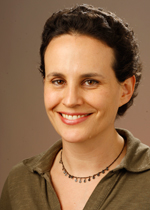
A teacher collaboration model used in Shanghai is proving useful to Tennessee teachers in building instructional expertise and boosting student outcomes, according to a new Vanderbilt research project.
Shanghai, China, is home to the world’s top performing schools, as measured by large-scale international assessments. The “Shanghai approach”—actually widely practiced throughout China, Japan and many parts of East Asia—incorporates common planning, peer observation, feedback and refinement.
Researchers at Vanderbilt Peabody College of education and human development are the first to deconstruct this successful teaching model and adapt it for use in American schools. Last fall, Xiu Cravens, associate dean of international affairs at Peabody, and her colleagues, selected 18 high-achieving Tennessee school principals for a yearlong leadership development experience. The project was kicked off by a visit to China to observe the Shanghai model—dubbed “Teacher Peer Excellence Groups” (or “T-PEGs” for short).

During the 2013-14 school year, the principals, with the researchers’ support, implemented the TPEG model in elementary and middle school classrooms in Davidson, Shelby, Rutherford, Tipton, Loudon and Knox counties.
“The model stems from Asian cultures that revere elders, respect expertise and value collective wisdom, and that carries over to the classroom, where teachers learn from each other and benefit from one another’s experience,” Cravens explained. “This model creates a supportive environment in which new or struggling teachers are quickly brought up to the level of their peers.”
This is dissimilar to American schools, where teachers are generally isolated in their classrooms and have little time for planning, much less collaborating on lesson plans or learning from more experienced colleagues. In most cases, the only time they are observed or given feedback might be during their annual performance evaluation, Cravens said.

“In recent years, U.S. schools have been encouraging teachers to work together and build ‘professional learning communities,’” Ilana Horn, associate professor of teaching and learning at Peabody College, said. “That’s positive, but just scooting desks together is an insufficient move toward effective collaborative student learning.”
TPEGS could be a tangible way to add structure and depth to such collaborative work environments for teachers, researchers believe. Early study results seem to bear that out.
Despite some initial hesitation, the teachers overwhelmingly embraced the peer-support model, which allowed for greater exchange of ideas, strategies and materials. Principals were relieved to be able to share instructional leadership with the teachers in their schools, instead of trying to be experts in all subjects for all teachers.
Participant Robin Newell, principal of Mitchell-Neilson schools in Murfreesboro, reports a successful implementation of the TPEG approach.
“We had the highest growth numbers in the district, and we blew our math scores out of the water. I definitely attribute a great deal of that to the TPEGs,” Newell said. “The collaboration process was more valuable than any professional development I could have sent the teachers to. At the end of the year they said, ‘We can never go back to the old way of teaching—why didn’t we do this sooner?’”
Cravens and her colleagues recently received a $300,000 Innovated Professional Development Challenge grant from the Bill & Melinda Gates Foundation to continue to develop the TPEG model for American classrooms. The iPD Challenge supports innovative ways to improve teacher support systems and professional development. The researchers recently obtained a trademark for the TPEG process.
“The TPEG approach could prove to be especially helpful as teachers transition to new curriculum to meet the Common Core standards,” Cravens said. “When teachers work collaboratively it brings them all up to a higher standard and leverages knowledge and resources. It creates a network of support, and makes the whole school stronger.”
Peabody collaborators on the project include Ellen Goldring, Patricia and Rodes Hart Professor and chair of Peabody’s Department of Leadership, Policy and Organizations; Patrick Schuermann, research assistant professor of public policy and education; and Nancy Dickson, director of the Humphrey Fellowship Program at Peabody.